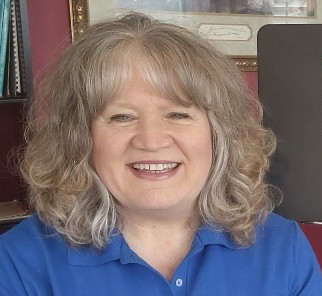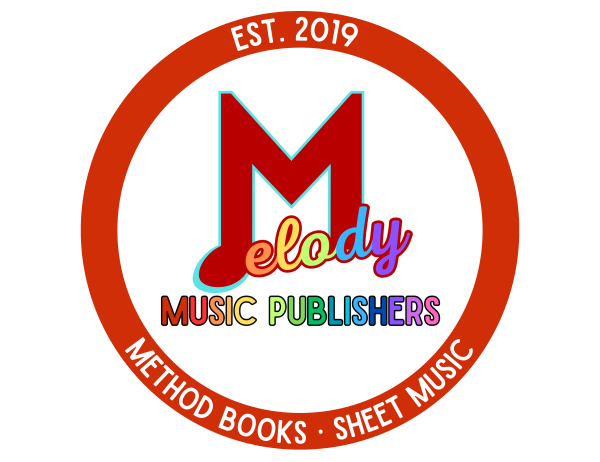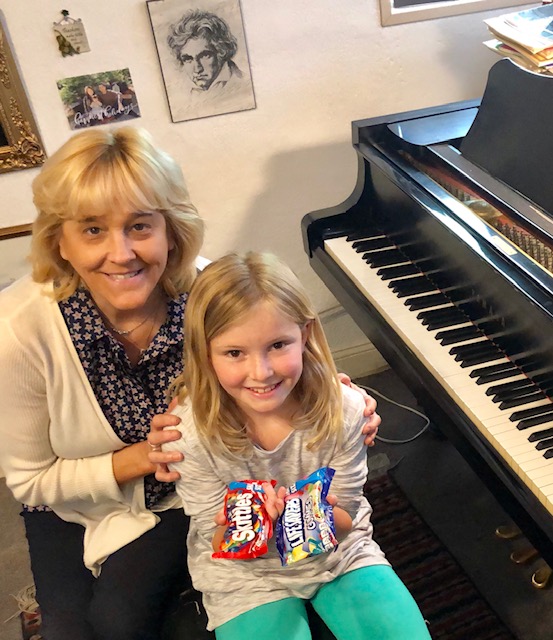How do young children learn to play the piano? Playing the piano and reading the notes simultaneously requires multiple skills that may be challenging for students under seven. Tip #10 is the best way to teach a young beginning piano student.
Learning to play the piano requires learning the key names, playing them, and reading music, all at the same time. Learning all these skills simultaneously may be unrealistic for a child under seven. It may cause the student frustration and quit even before they’ve begun.
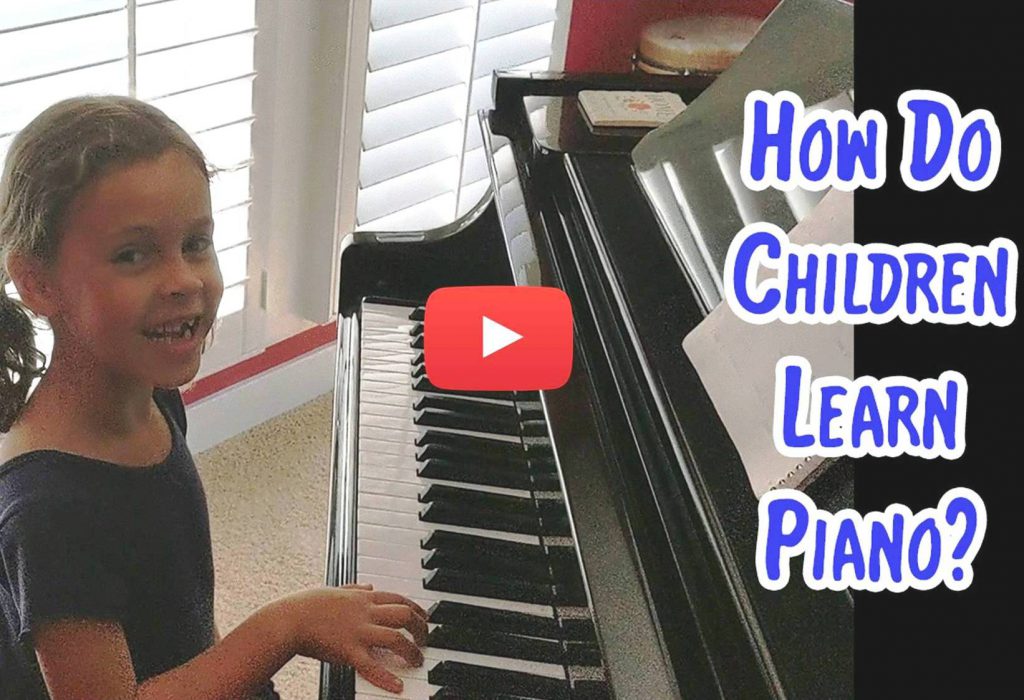
Children Learn Piano
There are many piano method books for young students that offer different approaches.
- There is a method called “rote learning,” a “copycat” type of learning. The teacher will play specific notes, and the student will play back what they’ve heard. There is some value in learning this way since a child at this age has learned everything by watching and copying. And it helps them to play songs right away, which keeps their interest. However, I don’t consider this a long-term teaching technique since they may not understand what they’re playing. It also doesn’t teach reading skills.
- Another method is learning the notes by pattern numbers. However, this is also not effective long-term since most songs are not written out in pattern numbers.
- Some method books use animal characters to teach fun activities that may not directly help teach the student to play. Even though it’s fun for the student, I feel this is a waste if too much time is spent on these activities.
- Some books start with playing the black keys only with finger numbers. Playing this way doesn’t teach the key name and is not realistic to playing the piano.
- Some books start with the middle C hand positions, where both thumbs awkwardly share middle C, then skip to other hand positions before the student has the chance to master each one.
- Another method book offers colors for each key to play songs instead of the key name. In my view, this is an example of another waste of time and learning, since this is not used in reading music.
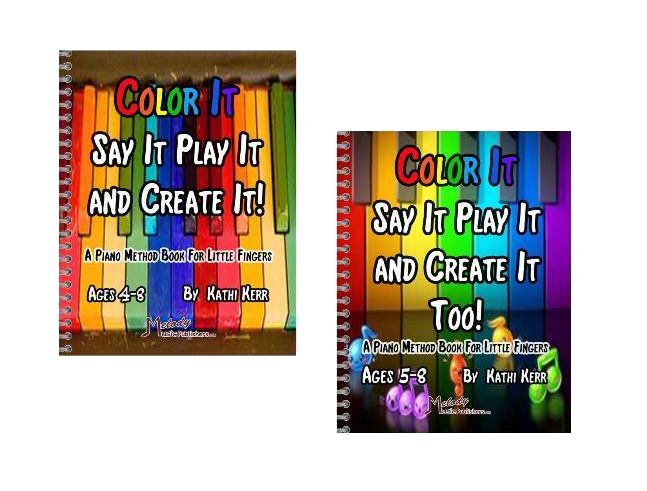 At Melody Music Publishers, we have two books for ages 4-8 called “Color It Say It Play it and Create It,” a 60-page book, and Color It Say It Play It and Create It Too”, a 50-page book. They’re taught for children to learn piano with clear steps that start with one concept and incrementally add the next concept needed, which is perfect for the young beginning piano student.
At Melody Music Publishers, we have two books for ages 4-8 called “Color It Say It Play it and Create It,” a 60-page book, and Color It Say It Play It and Create It Too”, a 50-page book. They’re taught for children to learn piano with clear steps that start with one concept and incrementally add the next concept needed, which is perfect for the young beginning piano student.
Both books start with the proper technique with knees at the edge of the keys, sitting tall, and letting the fingers relax to form a rainbow shape.
COLOR IT!
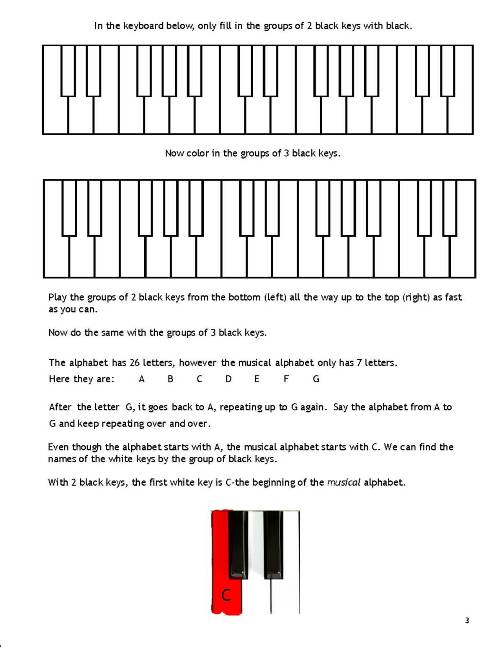
Keyboard geography is taught with a coloring book using the seven colors of the rainbow for the seven notes. It starts with coloring the sets of 2 black keys, then the 3 black keys, followed by just C-D-E in the first three colors of the rainbow.
SAY IT PLAY IT!

- Songs to say and play, using letter names using the C-D-E.
- Copycat games on C-D-E so the student can learn to listen and playback.
- Familiar songs with letter names and words like fast and hold for the rhythm.
AND CREATE IT!
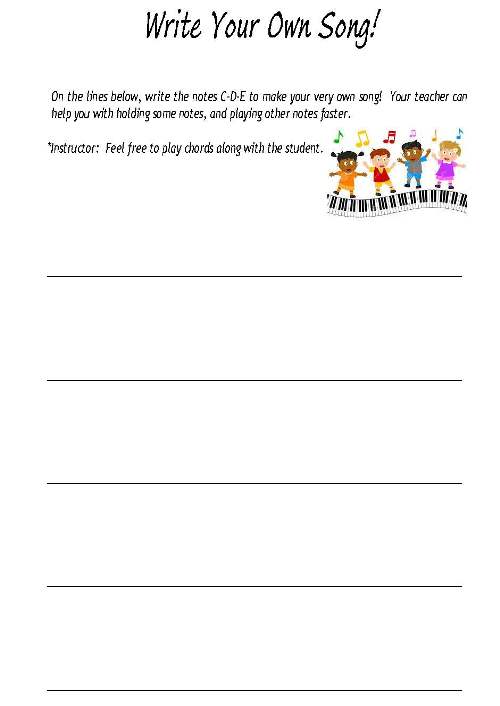
Then my favorite part, where the student does the “Write Your Own Song” using just the C-D-E notes in any order they want, can then play what they just created!
More Keyboard Geography!
Back to keyboard geography, coloring the F-G-A-B, then letter names for songs to practice all five notes. More copycat games follow with C-G.
Piano Exercises for children to learn piano
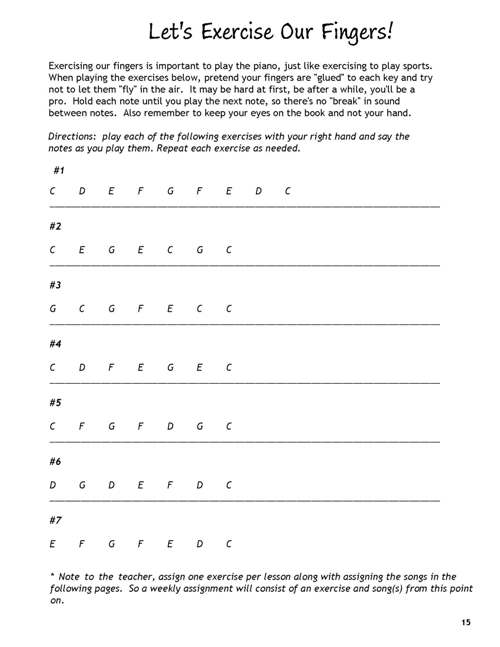
Then something is added that no other method book for this age has, EXERCISES! I believe even the young student needs to play exercises to develop their playing skill. These are patterns they can memorize and play multiple times to create control, steady beat, and speed! When students do not have to concentrate on the notes and rhythm, they can let their fingers fly on the keys.
Then there are more familiar songs with letter names and fast and hold for the rhythm, and another “Write Your Own Song.”
Rhythm for children to learn piano
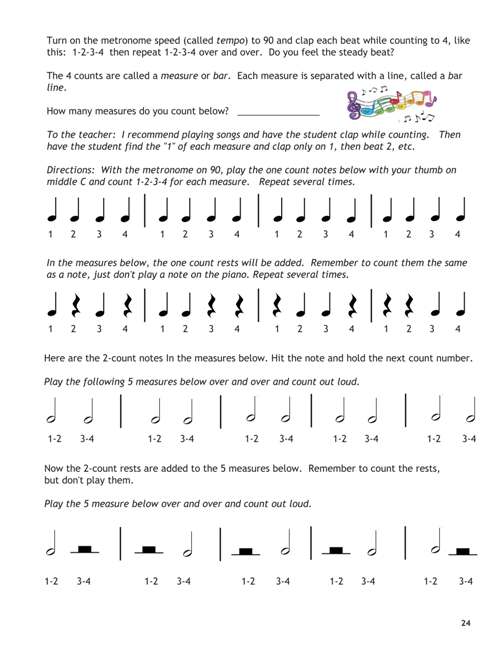
Now rhythm is introduced, showing the value for the one, two, three, and four-count notes and rests (notice their names are not included). Worksheets follow for the student to fill out, then RHYTHM DRILLS, something not seen in any other method book for this age! I have found even a 4-year-old can play the rhythm drills and count aloud. Playing rhythm drills establishes fluency in reading, counting, and a steady beat. Then there is rhythm dictation, where the student listens and writes the rhythm they hear and a chance to create their own rhythm.
Songs With Big Notes!
Once the rhythm is introduced, familiar songs are given using big notes with the name inside and rhythm for the young piano student to read notes and rhythm.
The left hand is introduced with fingering, songs, exercises, and copycat games to say and play using letter names. A page of rhythm drills is given, then left-hand songs with big notes and rhythm. These are original songs that are written how the left hand typically plays.
Both Hands Playing Songs!
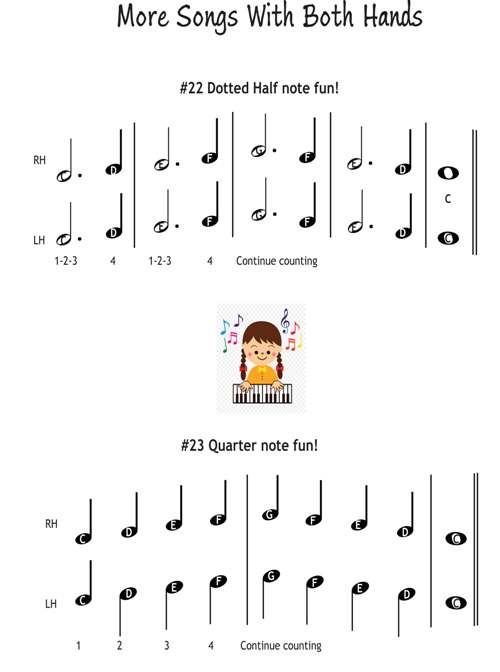
Then as you may guess, both hands are introduced with letter names to start and exercises. And finally, big notes with rhythm to play hands together. There are copy games for hands together that start with both hands playing the same note, then hands playing different notes. The book finishes with both hands playing familiar songs. Each song gets a little more challenging with a total of 33 songs.
“Color It Say It Play It and Create It Too”
This book starts out recapping book 1 at an accelerated pace, so students ages 7 or 8 can begin with this book. After the student completes playing hands together with big notes and rhythm, it then introduces notation for the treble clef notes C-G, worksheets, and four songs. Then the bass cleft C-G notes are taught, worksheets, and four original songs for the left hand, written in the left-hand style. A rhythm drill is included reading both treble and bass clef lines. And finally, six songs with both hands, all original except the last song, “Ode to Joy.”
The beginning of each book has assignment pages, note pages, and large manuscript pages for the student to write songs. The back of the book has a practice chart with points to give the student for passing assignments. And just for fun, there are Christmas songs at the back of both books. The student can play the arrangement for the level they’re in at Christmas time.
By the end of book 2, the young student can play with skill and read fluently in the C position! They’re now ready to progress to our “Drill & Excel On the Piano” series!
I have seen my own young students learn when one concept is taught at a time. The “Color It Say It Play It and Create It” series offers the perfect step-by-step model for the young student to learn and thrive on the piano!
I hope this helps you be the best teacher ever!
